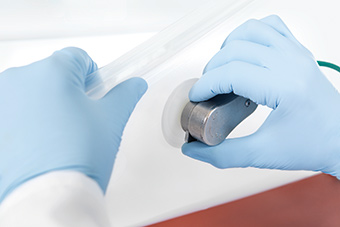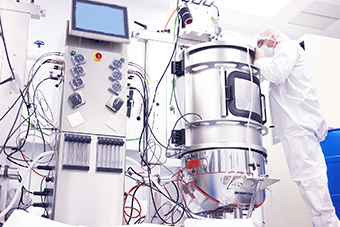So what is capacitance measurement
and why should I use it?
The Theory
Aber’s pioneering work in the development and use of dielectric instrumentation to monitor biomass, by measuring cell membrane capacitance and media conductivity, has regularly set new standards. In the biotech market, our current FUTURA range is seen as the benchmark in determining live cell concentration online in bioreactors.
Principle of ABER’s Cell Capacitance Technology
Cells with intact plasma membranes in a bioreactor/fermenter can be considered to act as tiny capacitors under the influence of an electric field.
The non-conducting nature of the plasma membrane allows a build up of charge. The resulting capacitance can be measured: it is dependant upon the cell type and is directly proportional to the membrane bound volume of these viable cells.
Aber’s technology converts capacitance into a live biomass reading, typically cells/ml or g/l. However, other units can be derived from the raw capacitance measurements; these may be more relevant to the chosen application.
FUTURA also measures the Conductivity of the medium, in millisiemens per centimeter (mS/cm). Conductivity is not used to measure biomass but is indicative of the production or utilization of ions by the cell suspension, e.g. pH control and other fermentation processes.




